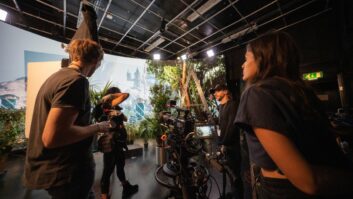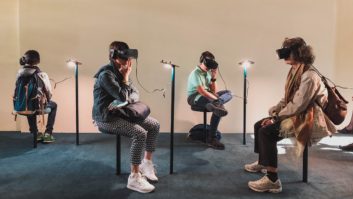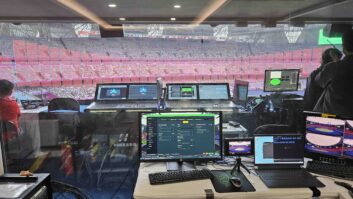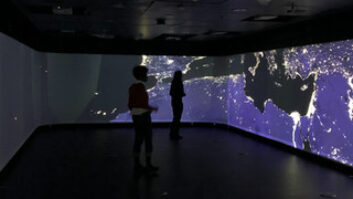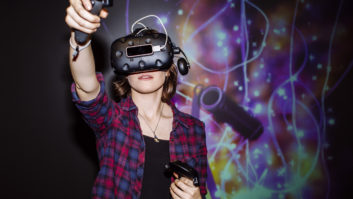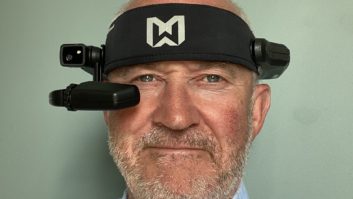Pro AV has rarely been lacking in buzz around technologies with transformative potential; there’s no question that we are seeing one prime example at the moment with AI. But cast your mind a few years back – before Covid-19 – and you will surely recall that there was massive excitement around potential applications of virtual reality (VR) in ‘core’ pro AV sectors including corporate and education.
Spool back to the present and the latest general data about VR and Augmented Reality (AR) is certainly encouraging. For example, according to a Statista report published in November 2023, the global revenue in AR & VR is expected to increase continuously between 2023 and 2027 by a total of US$21.6 billion (+67.33%). Consequently, the market is forecast to be worth US$53.71 by 2027.
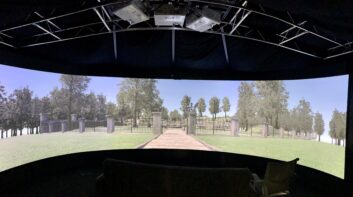 Despite this, there is a perception that VR is still some way off achieving its full potential. In a thought-piece published by Installation at the start of 2023, Gilles-Adrien Cenni – CTI of VR experiences specialist The Park Playground – remarked that “virtual reality still remains a very niche market with the majority of the general population having never experienced VR first-hand”. He went on to state that VR usage is “still very much in its infancy for B2B, B2C and general consumer markets”, but with promising growth suggested there was a “huge window of opportunity to capture imagination”, not least through Location Based Entertainment (LBE) VR.
Despite this, there is a perception that VR is still some way off achieving its full potential. In a thought-piece published by Installation at the start of 2023, Gilles-Adrien Cenni – CTI of VR experiences specialist The Park Playground – remarked that “virtual reality still remains a very niche market with the majority of the general population having never experienced VR first-hand”. He went on to state that VR usage is “still very much in its infancy for B2B, B2C and general consumer markets”, but with promising growth suggested there was a “huge window of opportunity to capture imagination”, not least through Location Based Entertainment (LBE) VR.
As we shall see, site-oriented entertainment applications are by no means the only growth area for VR. In particular, corporate and education are looking increasingly dynamic – indicating that, while other technologies might currently be dominating the discussion, VR has a bright future ahead in multiple sectors.
GREAT BENEFITS
Drawing on Futuresource Consulting’s extensive research into XR (the catch-all term used to refer to VR, AR and mixed reality), market analyst Nikolaos Tzoumerkas confirms that entertainment applications continue to dominate. “I would say that entertainment represents close to 75% of the market, and [it’s clear how much it] can benefit from these technologies,” he says.
Live music appears to be especially fertile territory. Virtual concerts precipitated by pandemic conditions demonstrated that they could attract huge attendances, whilst this has continued after Covid; for example, a recent gig by K-pop band BTS reportedly attracted in excess of 49 million online viewers. Acts including Ariana Grande, Lil Nas X and Travis Scott have also drawn online audiences of more than 25 million for single shows in the last few years.
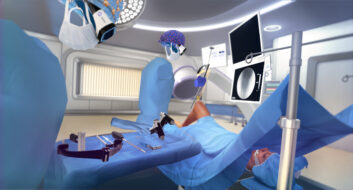 Moreover, notes Tzoumerkas, “we’re talking here about “virtual – not even virtual reality”, so just imagine the potential of regular VR concerts. “But now we’re starting to have VR concerts that could also have millions and millions of people attending,” he says, adding that VR gigs may also appeal to consumers eager to cut down on attendance costs including travel and food – although, of course, they will have had to stump up for a headset first. “If you are only going to watch one concert [every so often], then it’s not worth the expense, but if for example you are using it weekly then it could be a great benefit for you and eliminate a lot of extra costs.”
Moreover, notes Tzoumerkas, “we’re talking here about “virtual – not even virtual reality”, so just imagine the potential of regular VR concerts. “But now we’re starting to have VR concerts that could also have millions and millions of people attending,” he says, adding that VR gigs may also appeal to consumers eager to cut down on attendance costs including travel and food – although, of course, they will have had to stump up for a headset first. “If you are only going to watch one concert [every so often], then it’s not worth the expense, but if for example you are using it weekly then it could be a great benefit for you and eliminate a lot of extra costs.”
In truth, the impact on the traditional live music model is yet to become fully clear, although one imagines legacy promoters and venue operators might have a few objections to the gradual reduction of in-person attendance. As for headsets, these have undoubtedly suffered from the perception of discomfort (not least due to device weight) over any protracted period of usage, but things seem to be improving here, too.
Multiple developments – such as the use of bioplastics and ultra-slim pancake lenses – are rendering VR headsets significantly lighter than they used to be. Indeed, it’s likely that we are already in the foothills of an ‘arms race’ when it comes to VR headset weight. It’s hard to know quite how the much-vaunted Apple Vision Pro – announced in June and expected to ship in early 2024 – fits into things as Apple has (at time of writing) yet to have confirmed its weight, but suffice to say that there are now plenty of contenders in the sub-700g bracket.
Then there is the rise of a technique called foveated rendering, which has the potential to significantly improve VR graphics quality by reducing the number of pixels rendered. Tzoumerkas explains: “It tracks your eyes and where your eyes are looking [at any given moment] so the resolution there is better, whilst the rest of the screen has a slightly worse resolution because your eye is not focusing there. By doing that you get a perfect image at exactly the point you are looking at, as well as a more immersive experience because your eye works in a similar way.”
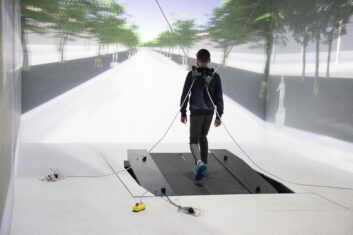 With an improved overall experience compounded by falling headset prices (admittedly, following a recent drop in annual sales), the conditions seem favourable for a long-term expansion of VR in entertainment-driven applications. Tzoumerkas confirms that venues and operators are “already making investments” in the necessary supporting infrastructure. But whilst this market looks set to remain the biggest money-spinner for the foreseeable future, it’s not alone in generating significant new opportunities.
With an improved overall experience compounded by falling headset prices (admittedly, following a recent drop in annual sales), the conditions seem favourable for a long-term expansion of VR in entertainment-driven applications. Tzoumerkas confirms that venues and operators are “already making investments” in the necessary supporting infrastructure. But whilst this market looks set to remain the biggest money-spinner for the foreseeable future, it’s not alone in generating significant new opportunities.
PHENOMENAL SCOPE
Among those who spoke to Installation, there was a consensus view that VR is taking off rapidly in various facets of education. Not surprisingly, medical training – where VR offers phenomenal scope to improve procedural performance ahead of ‘real world’ operations – is in the vanguard of this trend, as Dr. Justin Barad, CEO and founder of immersive and interactive training platform Osso VR, can attest.
Surveying the overall medical landscape, he remarks: “We have major gaps when it comes to procedural care delivery in medicine; there’s too much to learn, modern procedures are more complicated, and we lack objective assessment tools. Compounding this problem is a significant shortage of healthcare providers. VR enables the ability to train any time and anywhere to effectively address these gaps. Eight peer-reviewed studies have shown that VR can significantly improve procedural performance. Given that there are over 300 million major procedures performed annually, the potential impact of this technology is a level of improvement in global health that is very rarely seen.”
John Mould is commercial development manager of ST Engineering Antycip, a leading force in VR, simulation, visual displays and engineering services. He notes that education is now among the most enthusiastic adopters of solutions such as VR caves, described by the ST Engineering Antycip website as constituting “essentially an empty room in the shape of a cube” in which each of the surfaces – the walls, floor and ceiling – may be used as projection surfaces to create a highly immersive virtual environment.
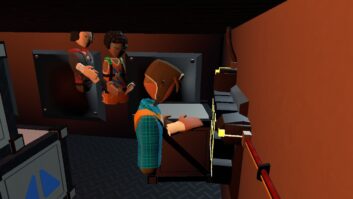 “We do see a lot of growth and strength for us in the education environment,” confirms Mould, noting that projects have encompassed everything from regular teaching to academic-driven research projects like a recent one with Bath University: “They were looking at the vibration in skyscrapers and trying to understand the impact on the human condition when the forces of the wind are affecting the higher floors. It was the first time we had had to deliver a VR cave located on the top of a motion platform so the [research team] could simulate the motion and see the virtual cityscapes outside from an elevated view.”
“We do see a lot of growth and strength for us in the education environment,” confirms Mould, noting that projects have encompassed everything from regular teaching to academic-driven research projects like a recent one with Bath University: “They were looking at the vibration in skyscrapers and trying to understand the impact on the human condition when the forces of the wind are affecting the higher floors. It was the first time we had had to deliver a VR cave located on the top of a motion platform so the [research team] could simulate the motion and see the virtual cityscapes outside from an elevated view.”
In an increasingly unstable world, it should come as no surprise that VR for training in the military – always one of the company’s most significant markets – has continued to generate a high level of orders. Indeed, it was a key factor that ensured “we were still firing on all cylinders [during Covid] because a lot of our customers are based in military, training and simulation”. Evidently, the military still needs to be able to train in virtual environments. whatever the broader circumstances.
Post-pandemic, Mould has the impression that there has been an across-the-board surge in interest surrounding the creative and commercial possibilities of VR: “We’re definitely seeing that customers are not reluctant to spend their budgets and really want to actually get this technology [into their operations] and start using it.”
HUGE POTENTIAL
In recent years, the corporate world has regularly been cited as one of huge long-term potential for VR applications. As Business Psychologist and VR Learning Specialist at VRE (Virtual Reality Experiences) International, Mark Whittle is well-placed to comment given that the company’s extensive remit includes the production and delivery of VR events – often for major corporations – as well as training, team-building and assessment.
Whittle confirms that there has been increasing interest in using VR for corporate meetings since the Covid era – especially where employees are spread over a wide geographical area. “We have encountered companies with employees in Europe, Asia and the US who have found that [using conventional conferencing technology] is just not cutting the mustard,” he says. “Instead, they want to bring their employees together in a more engaging, immersive way that is also very safe.”
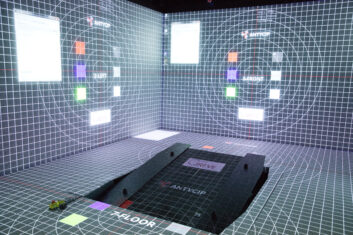 The result is an increasingly diverse array of “corporate team-builds and events where people located [around the world] can meet in a virtual space and have some fun, engaging experiences”. Meanwhile, banks and tech companies are among those looking to VRE to enable VR-based training, although as Whittle points out, there is seemingly no limit to the range of organisations interested in VR.
The result is an increasingly diverse array of “corporate team-builds and events where people located [around the world] can meet in a virtual space and have some fun, engaging experiences”. Meanwhile, banks and tech companies are among those looking to VRE to enable VR-based training, although as Whittle points out, there is seemingly no limit to the range of organisations interested in VR.
“It’s a real mix – there’s no one sector that dominates, and that actually makes sense because it’s often about how open-minded a particular head or director is in an organisation, rather than appealing to [individual departments] like manufacturing or finance.” Whittle also notes that companies are increasingly inclined to buy headsets rather than hire them – suggesting both a satisfaction with the lower price and form factor of the latest devices, as well as a long-term confidence in their application of VR.
In a year where AI above all other technological developments has dominated the industry headlines, it’s understandable that VR (and its MR ‘siblings’) has taken a bit of a back-seat perception-wise. But the truth is that, post-Covid realignment, there is more interest than ever in applying VR to a full range of applications – strongly suggesting that the best is yet to come in this area of innovation.
